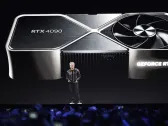A Groundbreaking Achievement in Telecommunications
One NZ, a telecommunications company based in New Zealand, has made history by becoming the first global company to power a nationwide satellite text messaging service via SpaceX’s Starlink technology. This milestone marks a significant step forward in the development of satellite-to-cell services, which have the potential to provide reliable communication solutions even in areas with limited or no cellular coverage.
Partnerships and Expanding Reach
Starlink has been making waves globally by partnering with leading telecommunications companies in various countries. Some of these partnerships include:
- Canada: Starlink has partnered with a major Canadian telecommunications company, expanding its reach across the country.
- Australia: The partnership with an Australian telco will provide reliable communication services to remote areas and regions affected by natural disasters.
- Japan: Starlink’s collaboration with a Japanese telecoms giant will bring advanced satellite-to-cell technology to the Japanese market.
- Peru: Starlink has partnered with a Peruvian telecommunications company, aiming to bridge the digital divide in rural areas.
- Switzerland: The partnership with a Swiss telco will provide reliable communication services to remote and mountainous regions.
US Partnership with T-Mobile
In addition to its global partnerships, Starlink has also signed up with T-Mobile, one of the leading telecommunications companies in the United States. This partnership will enable T-Mobile customers to access satellite-to-cell coverage, particularly in areas affected by natural disasters or where cellular infrastructure is limited.
Eligible Devices and Expansion Plans
Currently, only four phone models are supported for One NZ’s Satellite TXT service:
- Samsung Galaxy Z Flip 6
- Samsung Galaxy Z Fold 6
- Samsung Galaxy S24 Ultra
- OPPO Find X8 Pro
One NZ plans to expand eligibility to more devices next year, making the service more accessible to a broader range of customers.
Service Expectations and Future Developments
During the initial rollout, most text messages can be sent and received within three minutes. However, One NZ’s Experience and Commercial Director, Joe Goddard, notes that this may increase to 10 minutes or longer during the first few months as they continue testing the capabilities of the service.
"We’re beginning with a small number of phones as part of the staggered rollout of the technology," Goddard said. "And critically, from today customers can send and receive text messages only, but in the future, we expect voice calling and data to also be available."
The One NZ Satellite TXT service will be free for existing customers on paid-monthly plans. However, it is unclear if new customers or those on other contracts will be required to pay an additional fee to access satellite-to-cell coverage.
Starlink’s Text-by-Satellite Service: A Prelude to Future Developments
Starlink’s text-by-satellite service was previously piloted with T-Mobile customers in areas affected by Hurricane Helene and Hurricane Milton in October. The success of this pilot program led to the Federal Communications Commission (FCC) granting approval for the service in November.
As part of its US Starlink beta program, which is set to launch early next year, T-Mobile will be signing up customers to test the service. This marks an exciting development in the world of satellite-to-cell technology, with the potential to revolutionize communication services in remote and underserved areas.
Conclusion
SpaceX’s Starlink satellite-to-cell service has made significant strides in recent months, particularly with its nationwide coverage milestone in New Zealand. The company’s partnerships with leading telecommunications companies globally have expanded its reach, providing reliable communication solutions to remote areas and regions affected by natural disasters.
As One NZ continues to develop the Satellite TXT service, customers can expect improved performance and additional features such as voice calling and data services. With Starlink’s text-by-satellite service set to launch in the US early next year, it will be exciting to see how this technology evolves and impacts the telecommunications industry in the years to come.
Sources




